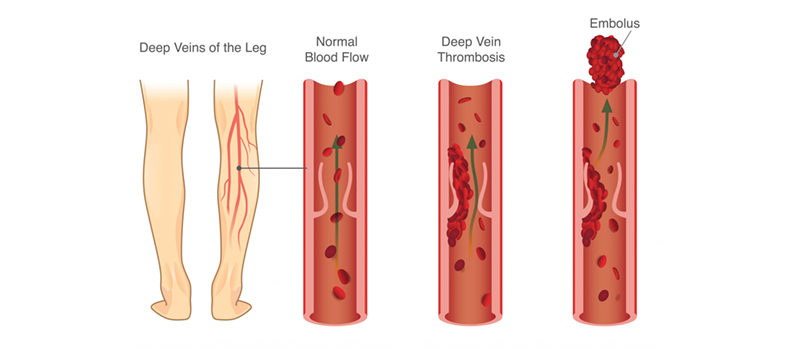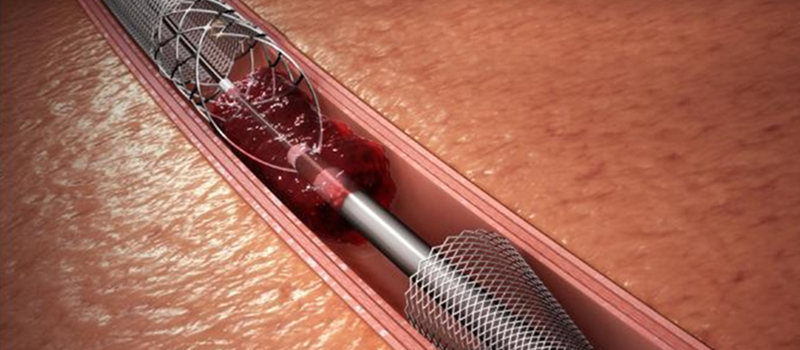Did you know that awkwardness in your legs can be a sign of Deep Vein Thrombosis? While it's known as a concern for people who've traveled for long periods in an airplane, Deep Vein Thrombosis can happen without travel. And it can result in death or disability if not detected and treated quickly.
What is Deep Vein Thrombosis
DVT is a complicate condition that happens when a clot in your body's deep veins occurs. The clot is essentially a piece of tissue that forms from foam cells and white blood cells swept in
from the circulatory system. When this tissue lodges in a vein deep inside your body, it can cut off blood flow to areas of your body, leading to serious health problems.

What Causes Deep Vein Thrombosis
Blood clots can occur because of a condition related to circulation. When this happens, the blood clots can stop your blood from flowing, leading to cardiovascular risks. Causes of clots that lead
to DVT may result from:
Damage to the walls of the veins that cause narrowing or blockage
Blood vessel damage from surgery or long rests after surgery
Impaired blood circulation due to prolonged hours of sitting
Medications that improve clotting
Symptoms of DVT
When it occurs in the lower extremities, deep vein thrombosis can cause both swelling and leg pain, but it may not have any kind of symptoms at all if it occurs in the upper extremities. In symptomatic cases of upper extremity DVT, the signs include shoulder pain, neck pain, swelling in the arms, and dark-tinted skin.
The signs and symptoms of deep vein thrombosis can be subtle during the early stages, so it's essential to know them so you can get proper treatment.
Treatment options for DVT
While DVT is a serious condition, it is also treatable. If you experience any of the symptoms listed above, you should contact your doctor right away. They can run some tests and prescribe
treatment to help you manage your condition.
Treatment options for deep vein thrombosis include medication, surgery, filters, and compression stockings.
Medication: The medication for deep vein thrombosis is anticoagulation, which helps prevent further blood clots from forming. These include Vitamin K antagonists: Warfarin and Coumadin. – Direct thrombin inhibitors: Dalteparin and Enoxaparin. – Fondaparinux. – Thrombolysis agents:
Streptokinase and TPA. – Antifibrinolytic agents: Amicar. – Heparin. – Urokinase. – Tacrolimus. – Reteplase, tenecteplase, and alteplase.
Surgery: Surgery is also an option for people experiencing severe pain from their deep vein thrombosis. In a thrombectomy procedure, your surgeon will make an incision into a blood
vessel. Using instruments, the surgeon will remove the clot. Through this process, the specialist can also identify the source of the problem and remove it to help prevent future blood clots.
Filters: These are specialized devices that prevent blood clots or filter out blood clots in the deep veins. The doctor will insert a small tube called a catheter into a large vein in your groin during
the procedure. The cardiologist will insert a filter into the vena cava through the catheter. The filter will stop blood clots from traveling to your heart, brain, or lungs.

Predicting long-term outlook (prognosis) for deep vein thrombosis (DVT) is challenging. It depends on whether the DVT is in a leg or an arm, whether there are other health problems, and
how the DVT is treated. With the surgery, you have a higher chance of complete removal of the clot.
At WASHINGTON Vascular Specialists, our doctors are skilled in all aspects of treatment, from diagnosis to surgery, which means we can do everything from simple treatments to more complex ones. We provide treatment to everyone, so don't delay getting help for any vein-related issue!



